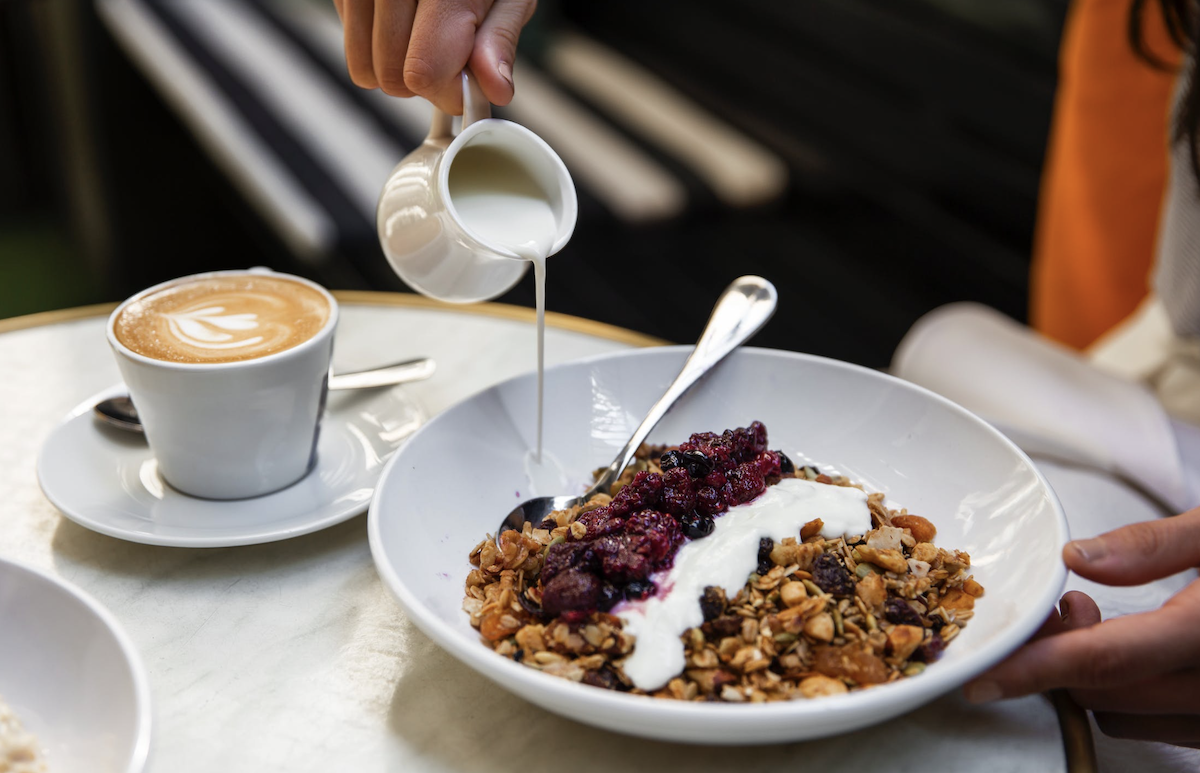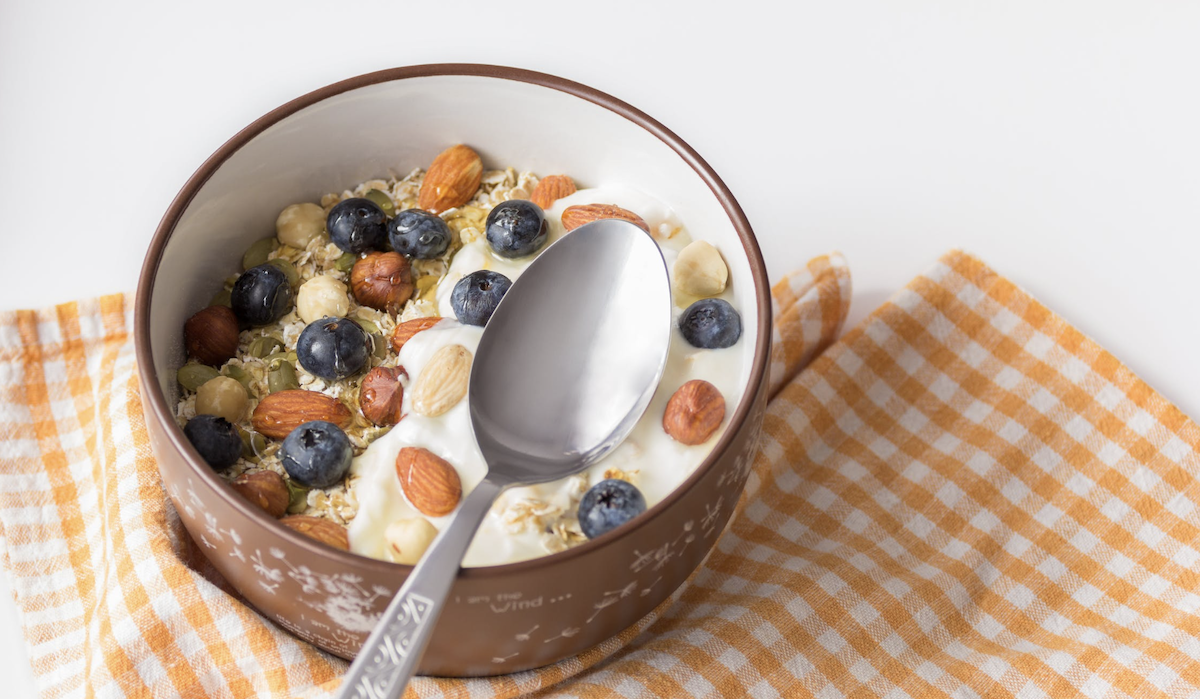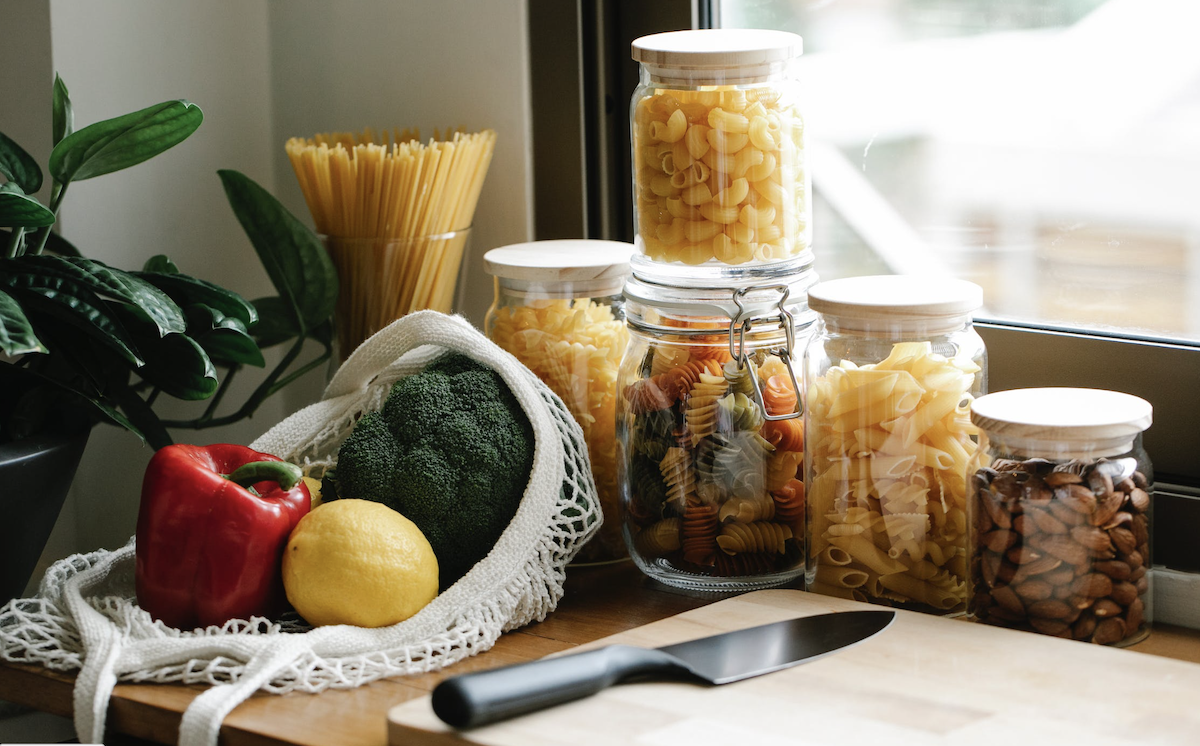Add, Don't Restrict

If you follow even just one nutritionist or dietitian on Instagram you’ve heard the “Add, Don’t Restrict” motto everyone is talking about these days. Heck, me too! I love it.
Let’s define “Add, Don’t Restrict.” It’s a gentle nutrition approach to move away from classifying foods as “good or bad,” create an abundance mindset around food, and create a space where you can add nutrition and healthy diet changes to your lifestyle without adopting an unsustainable diet.
With the Add, Don’t Restrict approach, you can lean into cravings instead of suppress them, feel full and satisfied at the end of snacks and meals, and ultimately, adopt healthier eating habits along the way.
Add, Don’t Restrict “Diet”
I’m going to run you through an example because that’s how I learn best. In this example I’ll answer how adding calories might actually help with weight loss in the long term, what kind of foods we should be adding to our snacks and meals, what is an appropriate time to add and what isn’t, and more.
This is a real-life example of my client Jessica’s (name changed for privacy) food log before we started working together. I have every client log 3 days of normal eating in the Ate app prior to our first session so I can get a glimpse into their normal habits and behaviors around food before I start fiddling. I discuss calories only to put into perspective how the Add, Don’t Restrict approach fits realistically into a well-balanced diet. Discussing calories is not to say you need to eat x amount, but to be a tool to learn how it all works.

Jessica’s 3 days looked like some variation of starting the day with cereal or nothing at breakfast, half of her daughters waffle mid morning, some cookies or random snacking before lunch, a coffee, small sandwich, and pastry between lunch and 3pm, two helpings of pasta at dinner, an ice cream bar after dinner, and she noted unlogged bites while she was cooking dinner several days.
In this day we see Jessica leaning into cravings, trying to keep calories “saved” and low by not eating breakfast, and mindlessly eating at times. Calorie wise, she has enough to keep her body functional. Maybe a little more. Nutritionally, there’s a lot of room to add color. This is what we call “overfed and malnourished.” Energy or calorie wise, all her needs are met. Nourishment wise, we’re lacking protein and fiber and lots of micronutrients.
Enough to live, not enough to thrive.
The solution? We obviously need to add colorful fruit and veggies, some whole grains and high fiber carbs, and some nourishing proteins for her body and brain. But we don’t want to strip away the reality of Jessica’s life. She’s a mom, she’s a wife, she loves sharing the experience of evening ice cream bars with her family and trying seasonal flavors. She also needs any nutritional changes to be easy and fit within her family’s busy lives and budget.
So we add, slowly, but we don’t restrict by taking everything away.
This is what her breakfast changes looked like to start.
Instead of nothing, we’re going to eat something. Calorie hoarding or “saving” calories early in the day to allow for dessert or a treat later, typically backfires and results in ravenous cravings and overeating. So we’re going to get ahead of that by prioritizing a protein and fiber-rich breakfast that promotes satiety and craving management.

Jessica loves the ease of cereal so we’re going to lean into that. We’ll add a cup of greek yogurt to bump up the protein. We’ll add a cup of raspberries to increase the fiber. And we’ll keep in a quarter cup of cereal or granola for a satisfying crunch, but just adjust the portion size to fit within her needs. Lastly, we’ll throw in one tablespoon of chia seeds for healthy fats and another fiber boost. All together we have a high protein, high fiber greek yogurt bowl done in 5 minutes with enough calories to suit her needs and minimize snacking urges until lunch.
Old Jessica would’ve had much less at breakfast with no breakfast or a small bowl of cereal but easily grazed on lots of unsatisfying snacks by lunch and still not felt full or like she’s sat down for a meal all day. This feeling continued for her all day.
Whereas adding that balanced yogurt bowl made it so that she could eat once, have protein, fiber, volume, and taste satisfaction to keep her full until lunch thus “saving” 250 calories. Ultimately, she ate less by adding, but felt like she’d eaten much more.
The biggest wins perhaps being that she wasn’t thinking about food all day, doubting whether or not she should have a bite of this or that, and confidently knew the ice cream at the end of the day with her kids would still fit.
Whether her breakfast is 300 or 700 calories is besides the point. It’s how that energy and macronutrient balance impacts her brain health, hormone health, craving management, energy levels, and confidence in her body.

Adding instead of restricting works in many other ways. It looks like adding chicken and broccoli to your family’s pasta night for more protein and color. The result, eating one helping instead of two and feeling refreshed instead of sluggish at the end of the night.
It looks like eating a quick cucumber, tomato and avocado tuna salad for lunch then having that chocolate chip cooking you’ve been craving. The result, the colorful tuna salad feeding your biological needs and the chocolate chip cookie feeding your satisfaction needs so you’re not going back to more cookies to make you feel full.
It looks like eating the ice cream bar after a full day of balanced meals, as is, without adding any protein or fiber to it because at that point, you don’t have to. Your biological needs are met, you’re cravings are managed, and you’re happy to satisfy taste hunger — normally. Like the naturally healthy person you’ve always wanted to be.
When it comes to the Add, Don’t Restrict approach, I recommend people start one meal at a time. Start with breakfast, stay consistent for two weeks, then build on it with lunch, dinner, etc.
Go slow, go steady, don’t stop. You got this.
Last updated: February 23, 2024
With my clients, I focus on shifting habits without restricting or counting calories to achieve sustainable weight loss or weight maintenance. We use practical nutrition so we can live life and feel our best! If you’re ready to dive deep into your habits and feel confident about your choices surrounding food again, book a free consultation with me here!
